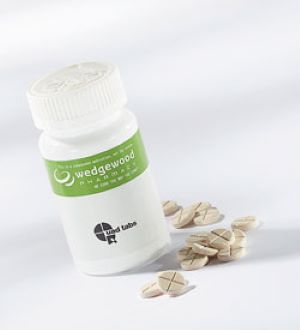Free Delivery on $50+* || Clinic Website
Providing Quality & Trust
Theophylline Quad Tab
Wedgewood Pharmacy
$82.50 - $311.50
$82.50 Each
Detailed Description
THEOPHYLLINE: QUAD TAB
Theophylline and aminophylline are from a group of drugs called xanthine bronchodilators. Other related drugs include theobromine and caffeine. These drugs have a number of pharmacologic effects including relaxation of bronchial smooth muscle, bronchial anti-inflammatory actions, central nervous system stimulation, mild diuresis, increased gastric acid secretion and mild cardiac stimulation.
The mechanism of action is through the inhibition of phosphodiesterase which increases cyclic-AMP and endogenous epinephrine. Increased levels of c-AMP may also decrease histamine release. The respiratory anti-inflammatory effects of theophylline may occur at a lower dose than that needed for bronchial smooth muscle relaxation.
Theophylline is well absorbed orally and is metabolized by the liver.
Theophylline may be prescribed for
- Myocardial Failure
- Cardiogenic Pulmonary Edema
- Bronchospasm
Prescribed for:
- Dogs
- Cats
One of the dosage forms available for Theophylline is Quad Tab. A Wedgewood Pharmacy exclusive. It’s a snap! Quad tabs® are scored twice for maximum flexibility in dosing and dispensing. Precision scoring makes it easy to snap-off a half or quarter tablet with ease.
1 strength of Theophylline Quad Tab is available in 100 mg/tab.
Dogs and Cats:
Theophylline is used as a bronchodilator in both dogs and cats to treat bronchoconstriction and inflammation associated with chronic inflammatory lower airway disease and feline asthma. Bronchodilators such as theophylline may be used with corticosteroids, and the use of a bronchodilator may permit a lowering of the dose of the corticosteroids. Theophylline is also used to treat both dogs and cats with collapsing trachea, intrathoracic airway collapse and pulmonary edema.
Side Effects:
- The most common side effects are central nervous system stimulation and gastrointestinal upset; particularly nausea and vomiting. Many of the milder side effects occur at the start of therapy but will resolve over time.
- Some clinicians will start an animal on a lower dose and increase the theophylline to the therapeutic dose after the first week.
- The less common and more serious side effects include cardiac stimulation and seizures.
Precautions:
- Theophylline should be used with additional caution in animals with severe cardiac, renal or hepatic disease. It should also be used with additional caution in animals with seizure disorders, gastric ulcers, hyperthyroidism, hypertension, and severe hypoxia.
- Neonates and geriatric patients may have increased clearance time, and may need additional monitoring. Animals with pre-existing cardiac arrhythmias or congestive heart failure may need additional monitoring.
- Theophylline has a low volume of distribution. The dose should be calculated based on lean body mass.
- Theophylline crosses the placenta. Approximately 70% of serum levels are found in milk. It should only be used in pregnant or nursing animals when the possible benefits outweigh the risks. crosses the placenta and has some anti-androgen properties in humans. It should only be used in pregnant or nursing animals when the benefits outweigh the risks due to the potential for feminization of fetuses. Spironolactone is found in maternal milk.
Drug Interactions:
- Theophylline is metabolized by cytochrome P-450 enzymes of the liver. Other drugs that are metabolized by this enzyme system may interact with theophylline.
- Drugs that inhibit the metabolism of and therefore increase levels of theophylline include: allopurinol, beta-blockers, propanolol, cimetidine, calcium channel blockers, corticosteroids, thiabendazole, exogenous thyroid hormone, macrolide antibiotics and flouroquinolone antibiotics.
- Drugs that may increase the metabolism of and decrease levels of theophylline include: barbiturates, rifampin, carbamazine, charcoal, phenytoin, ketoconazole, and beta-agonists.
- Theophylline decreases the effects of lithium, pancuronium, and propofol.
- Drugs that may either increase or decrease the levels of theophylline include: isoniazid and furosemide.
- Concurrent use with ephedrine, isoproterenol, and halothane may increase the risk of cardiac side effects.
- Concurrent use of theophylline with ketamine may increase the risk of seizures.

Powered by nopCommerce
This site is running in live payment mode. Real payments will be processed.

